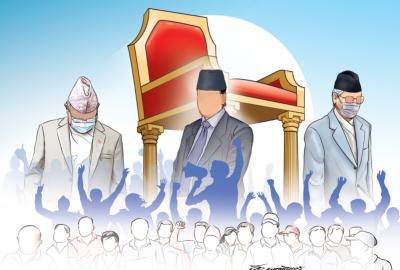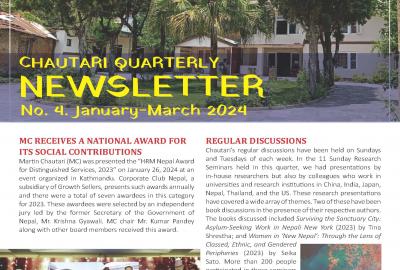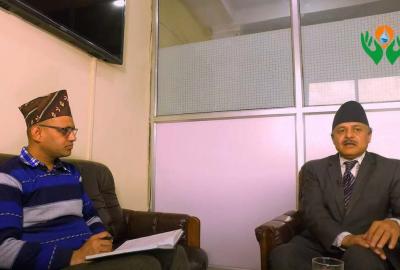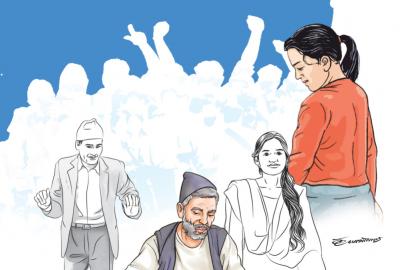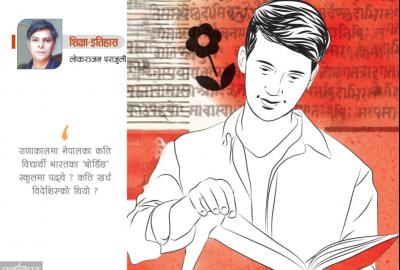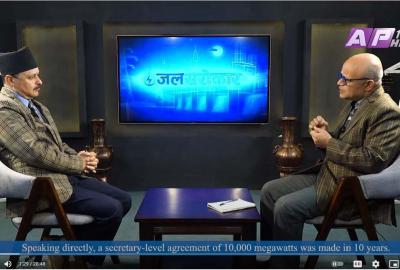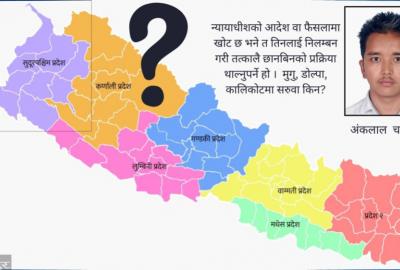Pratyoush Onta
As a graduate student at the University of Pennsylvania with the declared intention of qualifying in modern South Asian history, I took several interesting and challenging courses during the two academic years, 1989-1990 and 1990-1991 (for details, see my articles in these pages published on November 24 and December 1, 2018). During the latter academic year, apart from taking the formal courses for which I had registered, I also joined an unofficial reading group on South Asia. This was an initiative of graduate students who had research interests related to South Asia from various disciplines.
Although I do not remember who the main coordinators of this reading group were, I do recall that it consisted of about 10 students from different departments including anthropology, history, folklore, South Asia Regional Studies and possibly political science. Almost everyone in the group was senior to me. They had years of study related to South Asia at UPenn and in some cases, also in college.
I don’t remember which other books we read and discussed in this group but one we discussed was by the anthropologist Sherry Ortner. During the late 1960s, Ortner had done her PhD dissertation research on the Sherpas of Nepal at the University of Chicago. In 1978, she had published her first monograph, Sherpas through their Rituals. By the late 1980s, she had already become famous for her work on anthropological theory. Her 1984 article ‘Theory in Anthropology since the Sixties’ was prescribed reading for most graduate courses in anthropological/culture theory in US universities by the late 1980s.
In 1989, Ortner published her second book on the Sherpas, titled High Religion: A Cultural and Political History of Sherpa Buddhism. The book was described as a contribution to practice theory in anthropology. It reportedly built upon the insights of practice theory as discussed by Anthony Giddens, Pierre Bourdieu, and Marshall Sahlins, among others. During the previous academic year, I had read a bit of the work of the British sociologist Giddens but those were his introductions to the work of classical sociologists Marx, Weber and Durkheim. At that time, I had hardly read anything on his theory of structuration (as embodied in his 1979 book Central Problems in Social Theory: Action, Structure and Contradiction in Social Analysis). I had earlier tried to read the French sociologist Bourdieu’s Outline of a Theory of Practice (1977) and had failed miserably to understand it. In addition, I had not read anything significant by the American anthropologist Sahlins, although I knew about his works from friends in college who had majored in anthropology. His 1981 book Historical Metaphors and Mythical Realities is cited by Ortner.
When our reading group selected High Religion for collective reading, I bought a copy from a local bookstore and proceeded to read it very carefully. I enjoyed Ortner’s rendition of “a cultural and political history of Sherpa Buddhism” through what she described as “cultural schemas.” She wrote “every culture contains not just bundles of symbols…but organised schemas for enacting (culturally typical) relations and situations.”
She further argued that cultural schemas are durable because “they depict actors responding to, and resolving (from their own point of view), the central contradictions of the culture.”
Ortner demonstrated that with respect to the Sherpas, “there is a cultural schema that portrays a hero playing out, and ‘winning,’ the fraternal and political rivalries that are recurrently reproduced out of the contradictions of the social/cultural order.” Ortner’s writing was easy to follow (Anthropologist David N Gellner has stated the following about this book in a review: “Even in discussing those theorists who are notoriously obscure in expression, Ortner herself is incapable of writing an unclear sentence”). I, the historian-in-training, enjoyed the narrative history part. However understanding the theoretical significance of this book within the discipline of anthropology and social theory more broadly, was beyond my grasp then.
We had an animated discussion about this book when the unofficial reading group met to talk about it. While I don’t remember what others said, what one participant said on that occasion surprised me. He said he had not read the book but then went on to criticise it based on what others who had spoken ahead of him had said! Ortner’s cultural schemas were too neat to account for the messiness of history, he argued. But he conceded that it was a clever way to execute historical ethnography.
I have belabored the discussion of that unofficial reading group on South Asia from my graduate school days not as an invitation to readers to languish in my memories. Instead, I have described it at some length to stress the point that such unofficial reading groups can help graduate students to better understand their field. This happens via one’s own initial reading of the text and when you prepare, in your mind, the comments you hope to share with your peers in the reading group. But I would say that one learns a lot more from what other members in the group say about the same text. Their statements and the way they go about expressing them are key to one’s training and socialisation in the subject/field.
Apart from formal coursework and listening to research-based talks given by others, such training puts you in a better position to ask important and interesting questions when you begin to plan your MA, MPhil or PhD dissertations. Given the inflexibility of coursework in our context, one could even make the case that such groups are more necessary in Nepali universities than in western ones. As was the case described above, they should be initiated by students in our universities. Without exaggerating too much, such effort on the part of students is a way for them to take partial control over their own graduate training. There is certainly no dearth of books to read to discuss, both in the realm of social theory and Nepal Studies. A list containing several books can be agreed upon by group members and then the group can proceed to read them one at a time.
These unofficial groups can meet in a classroom or on the green chaur under a warm winter sun. Or they can meet in a tea-shop or in a not-so-busy momo pasal. Such efforts do not need the blessing of high university officials appointed through party bhagbanda or otherwise. They can also be kept afar from petty departmental politics and related jhamelas.
I don’t know for sure if MA/MPhil/PhD students in Tribhuvan University or our other universities organise such reading groups now. I am told that in the past, some PhD students at Tribhuvan University have organised such reading groups in which they not only discussed particular readings but also issues related to methods and theory. Whatever might be the historical record, graduate students in Nepali universities should get their act together and form unofficial reading groups to collectively read and discuss important and interesting texts outside of the formal classrooms. Sure, it will require some effort to organise these groups but the rewards will be ample for all the participants.
But is anyone listening?
The author tweets @pratyoushonta
Souce: https://kathmandupost.ekantipur.com/news/2018-12-15/reading-in-a-group.html

